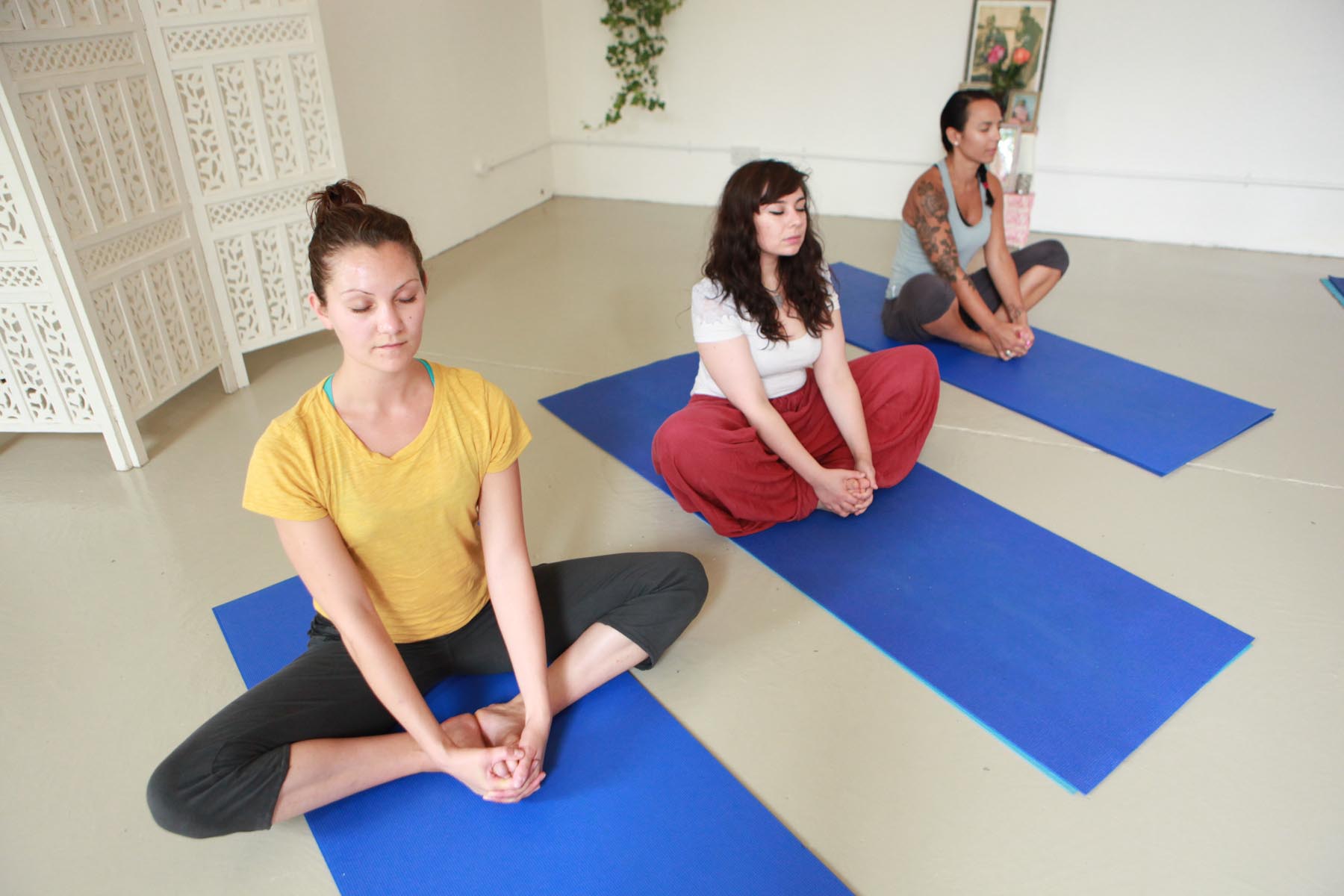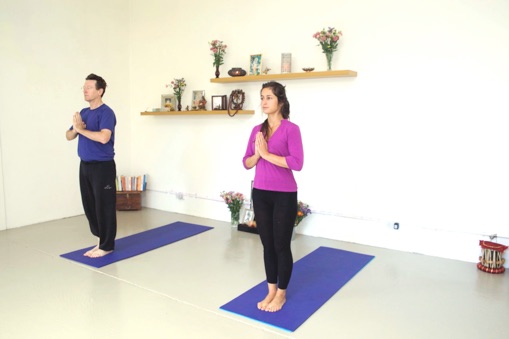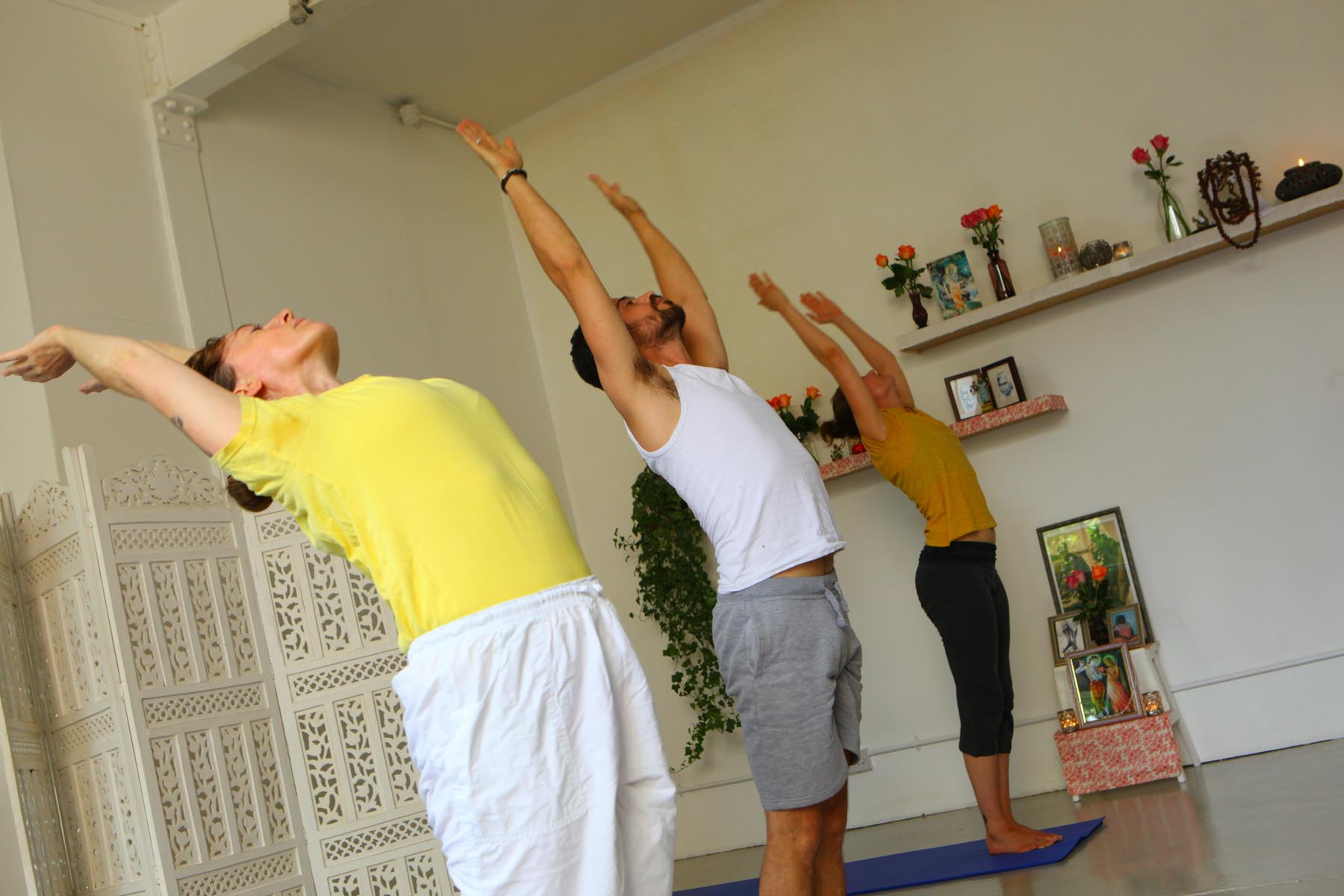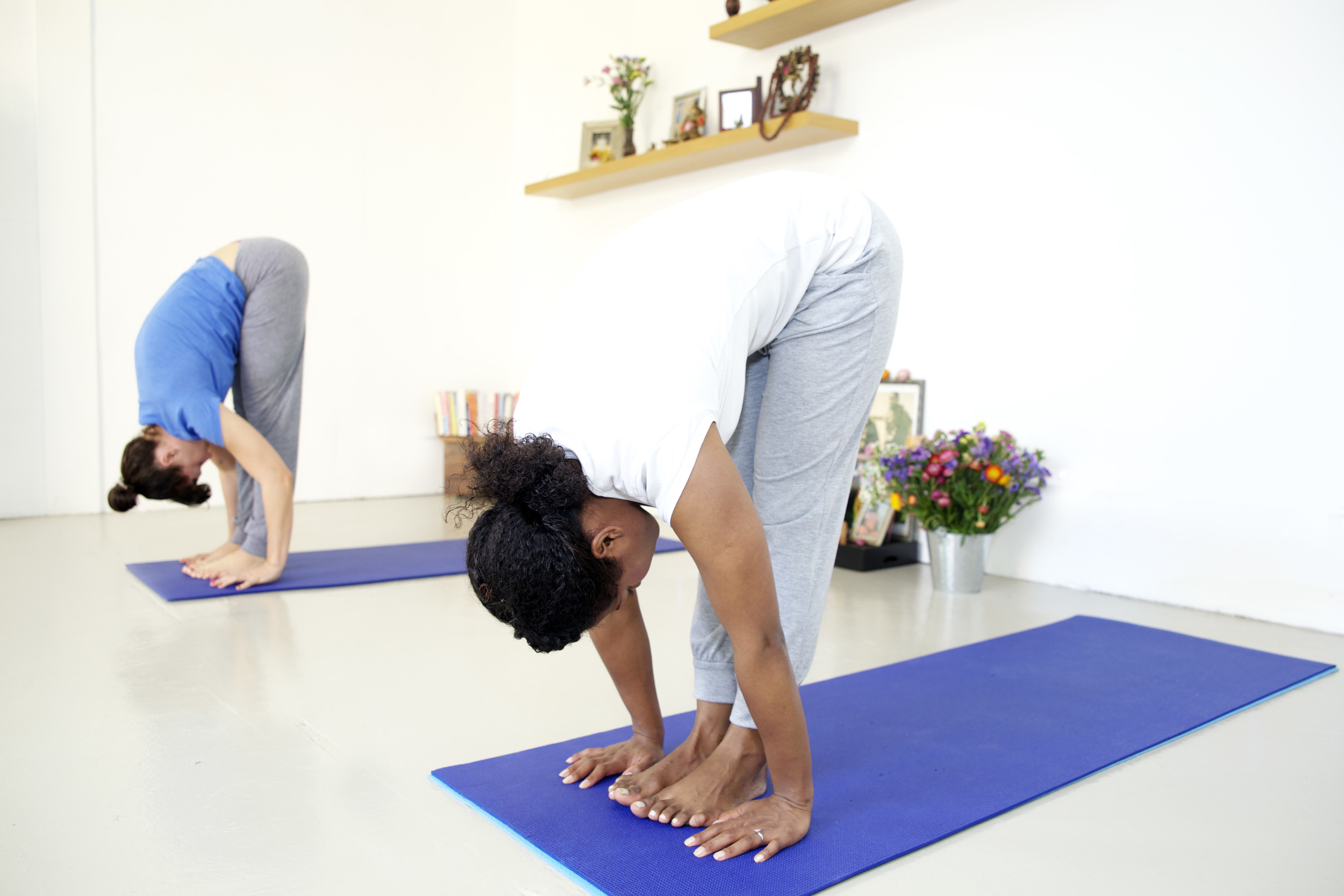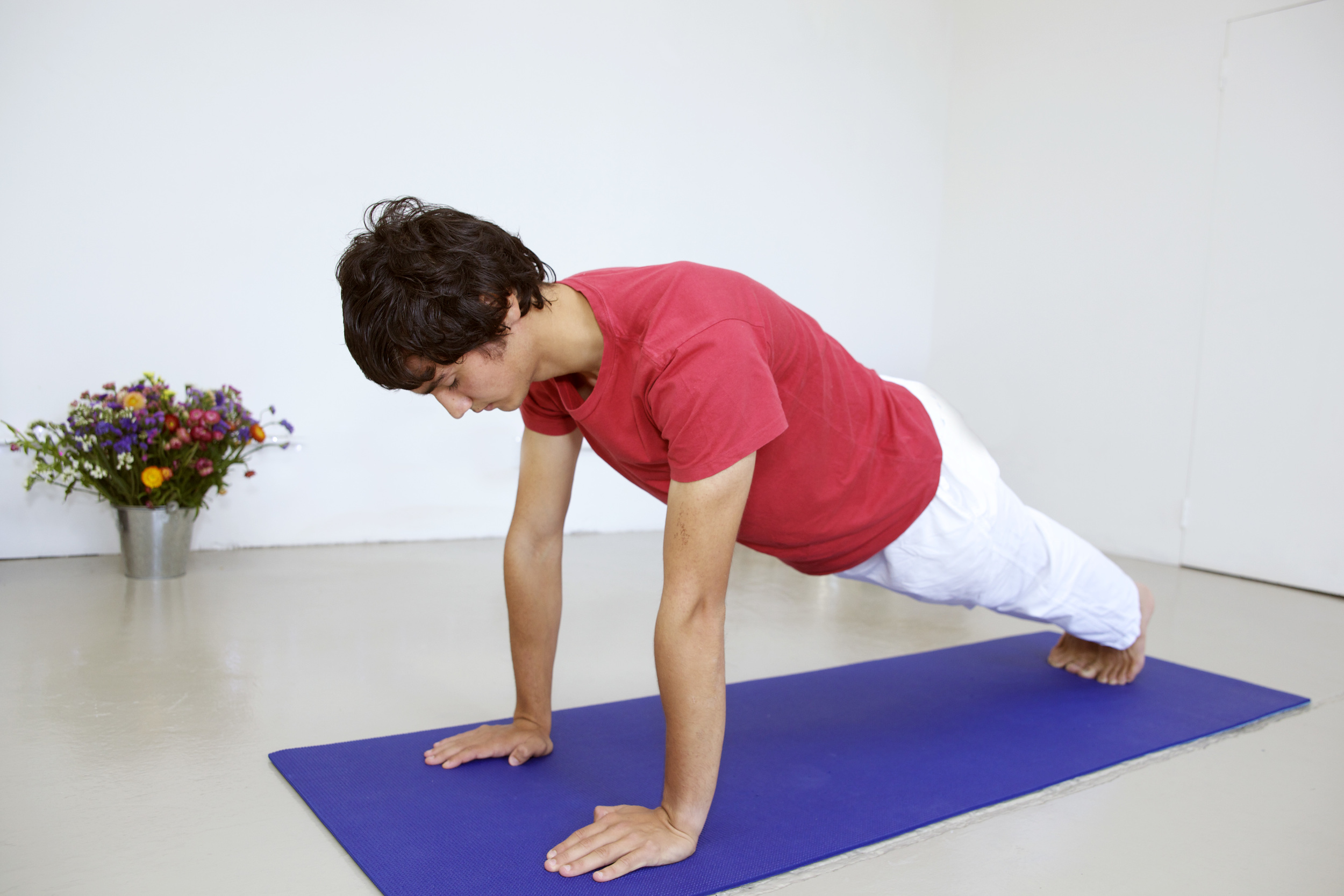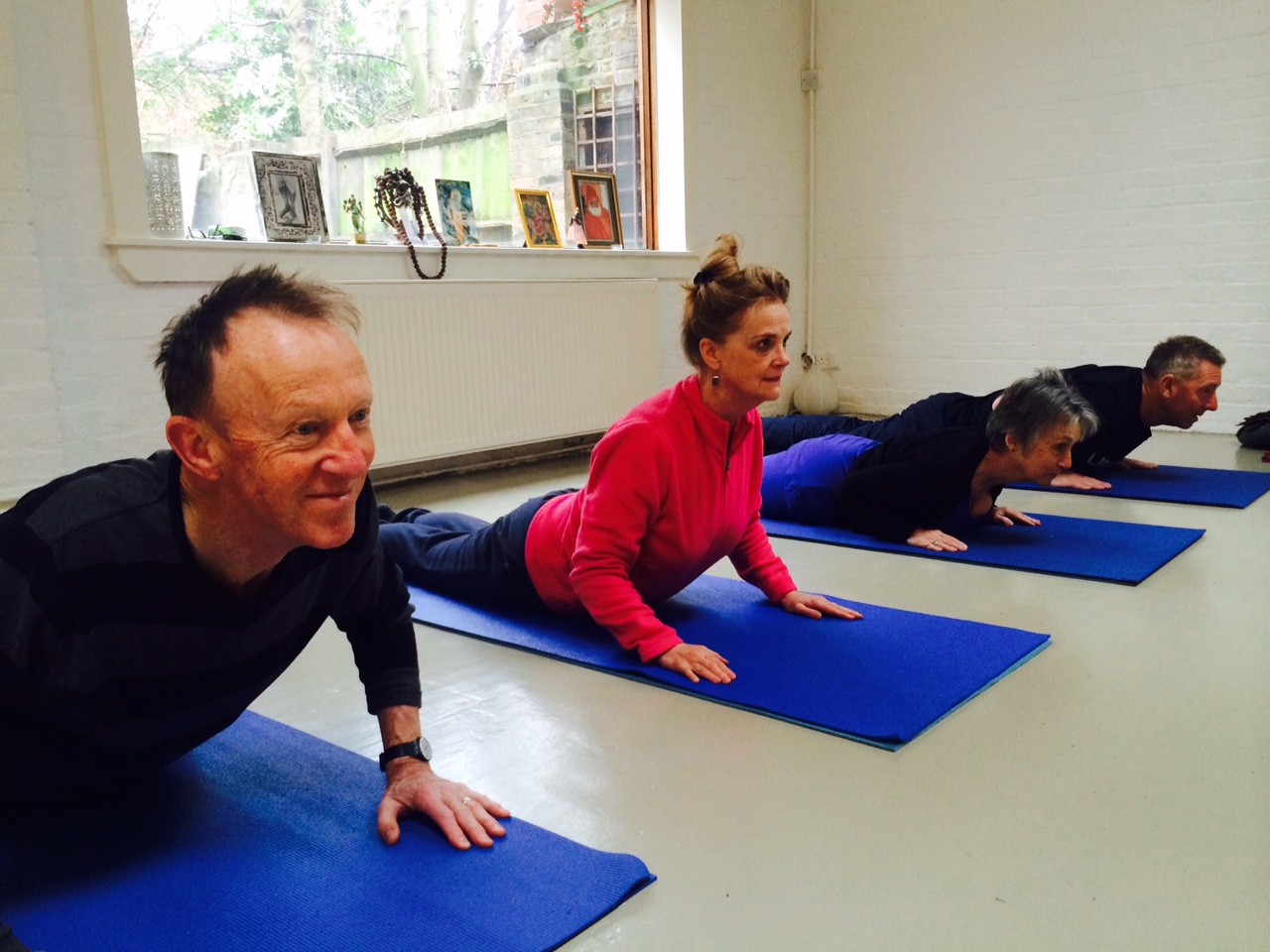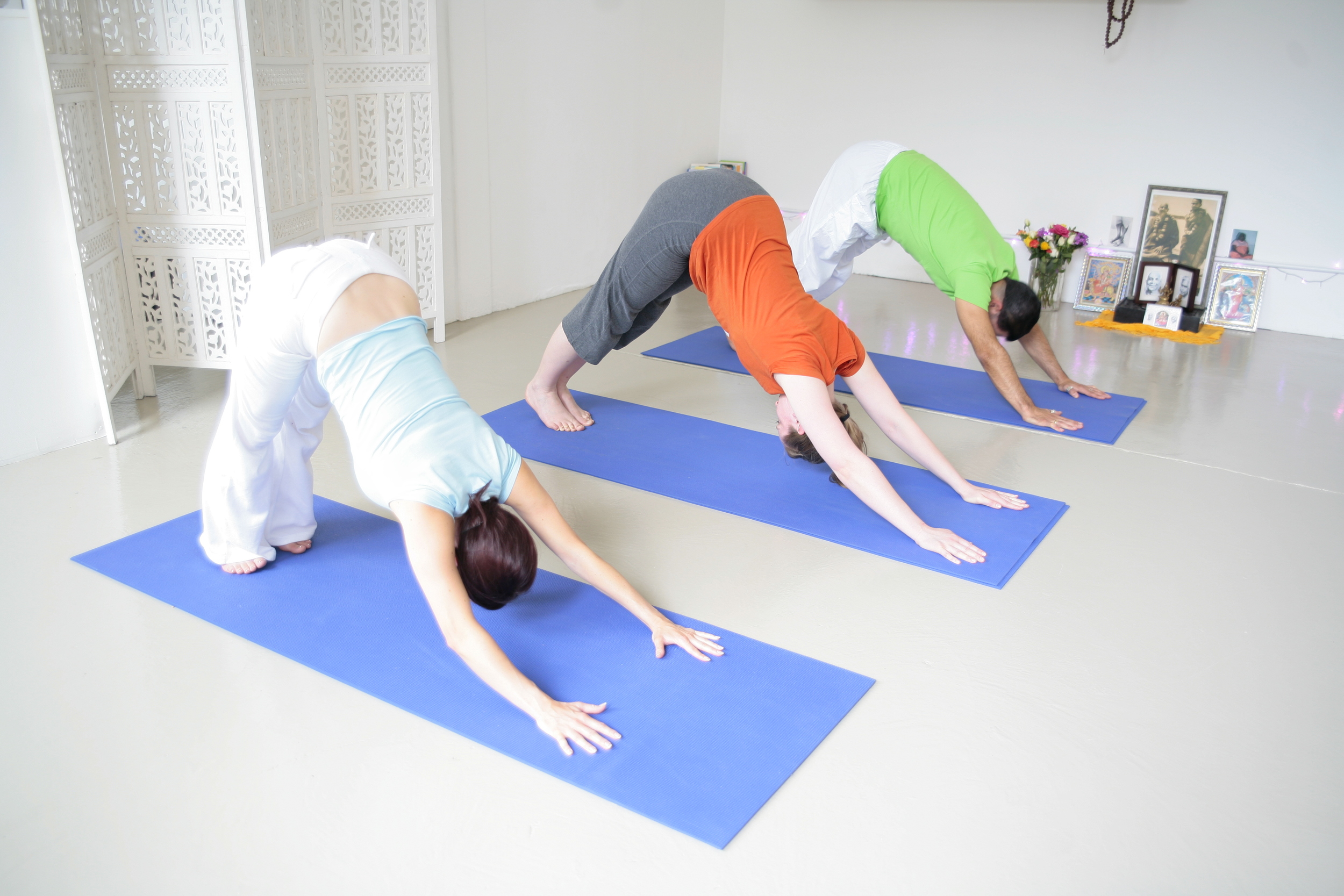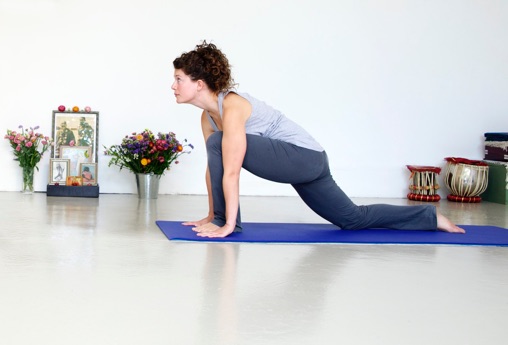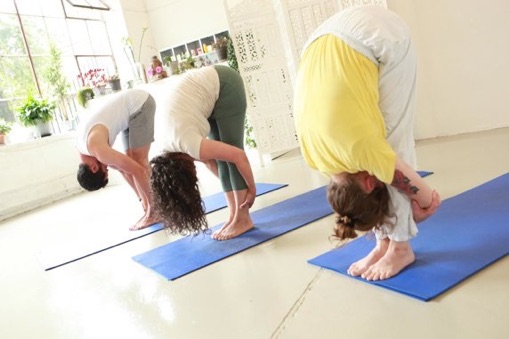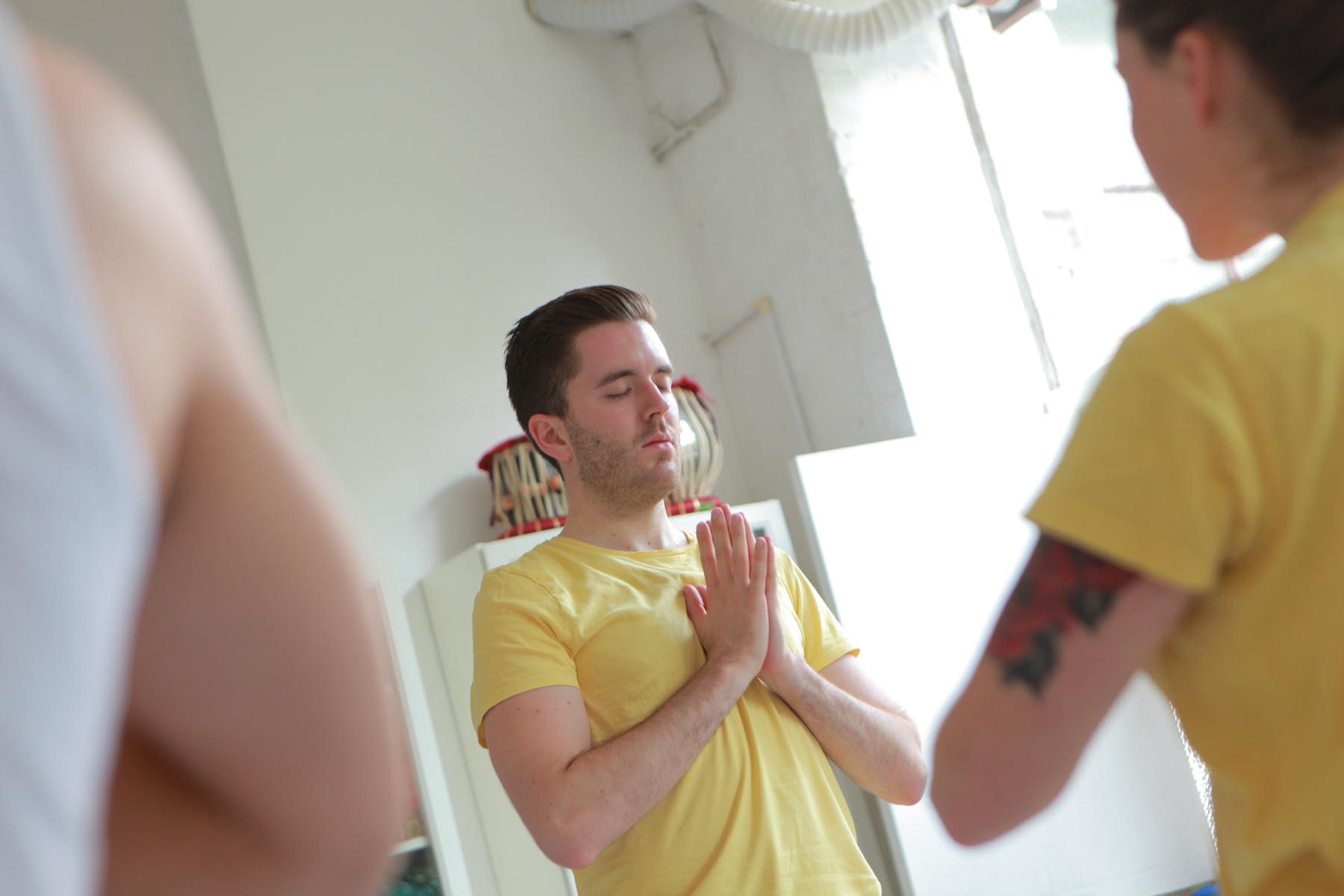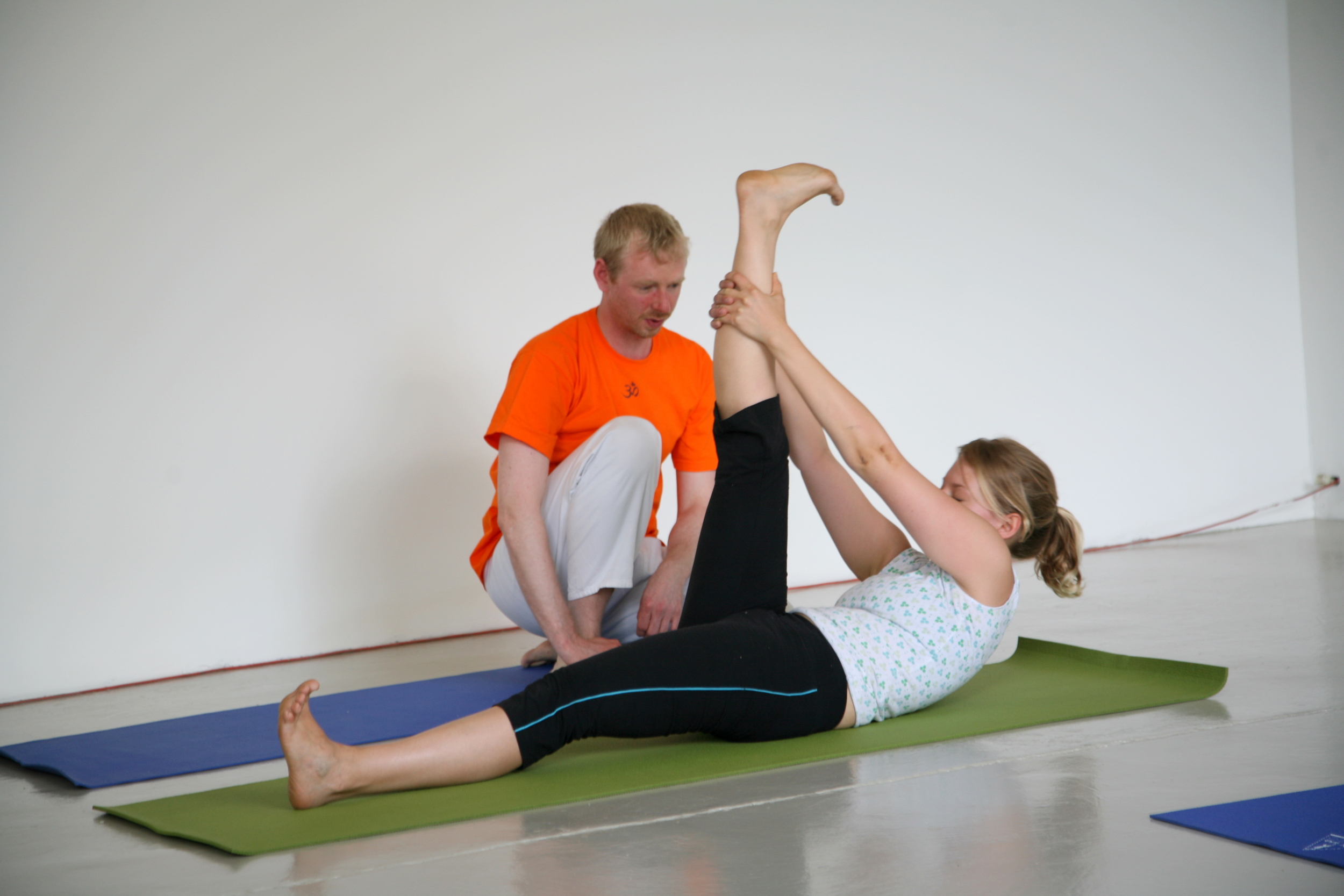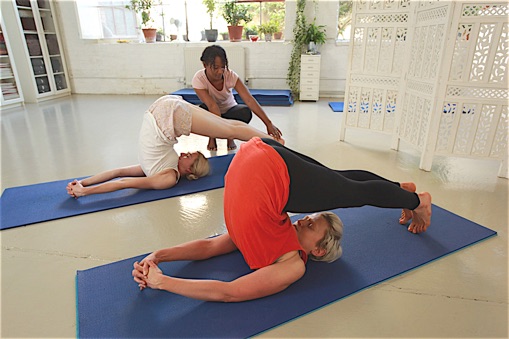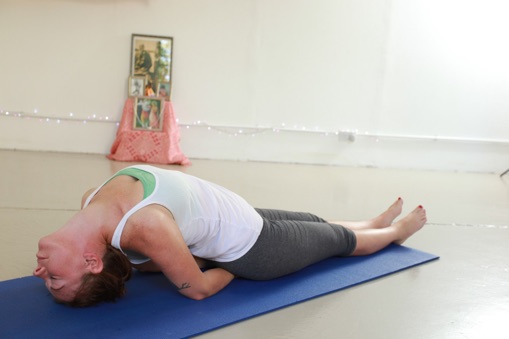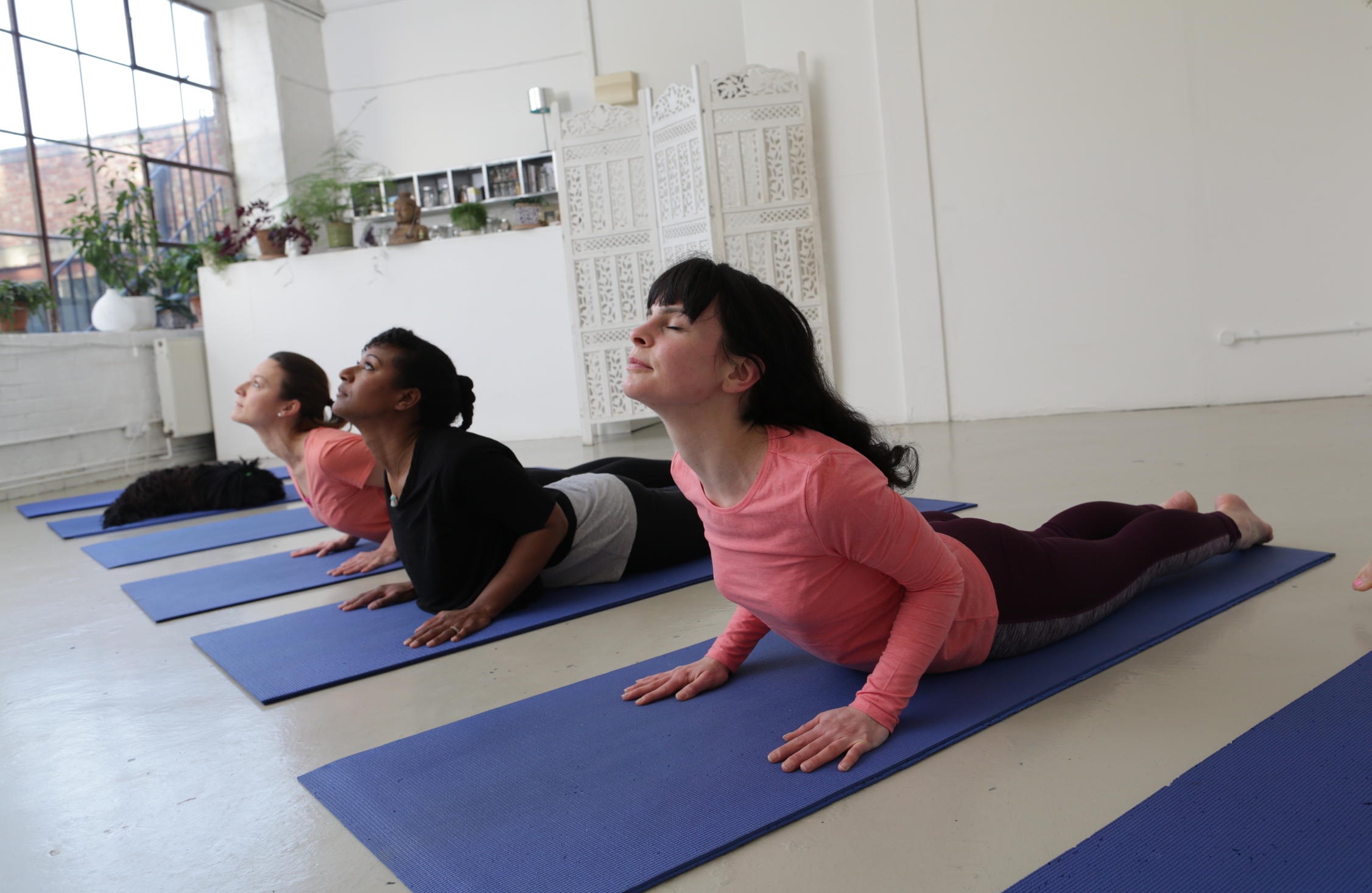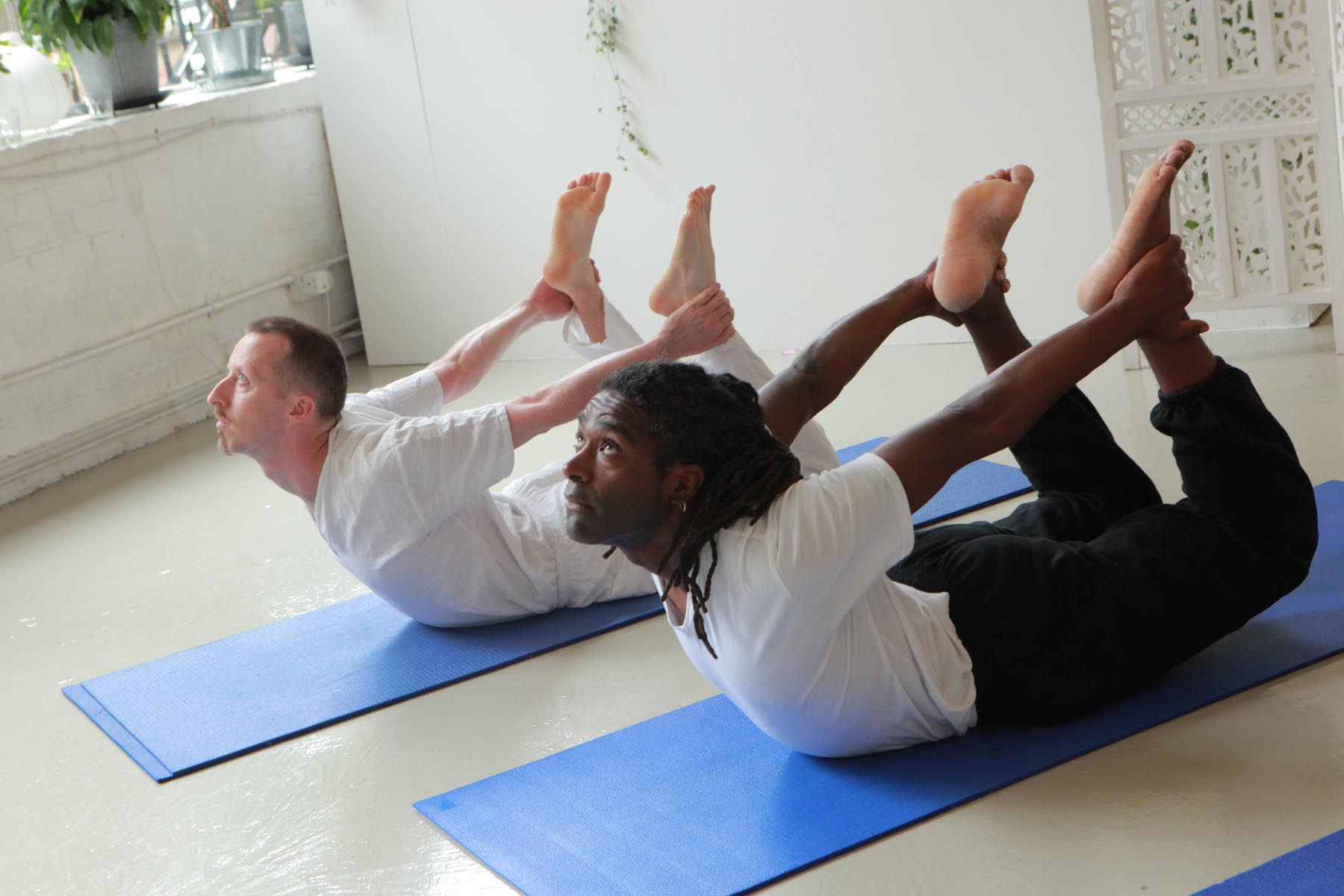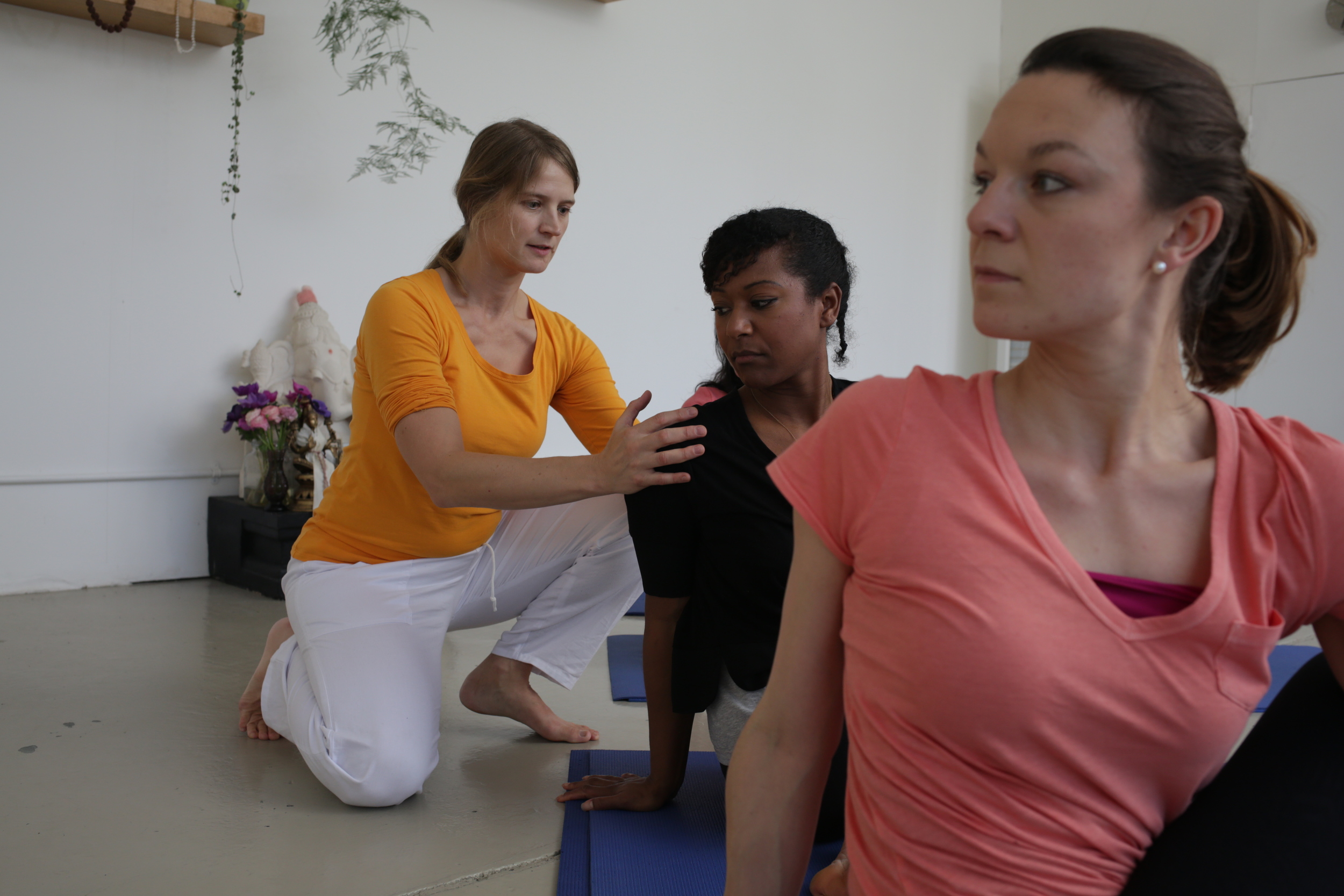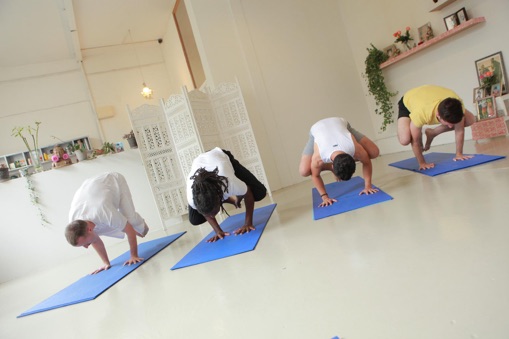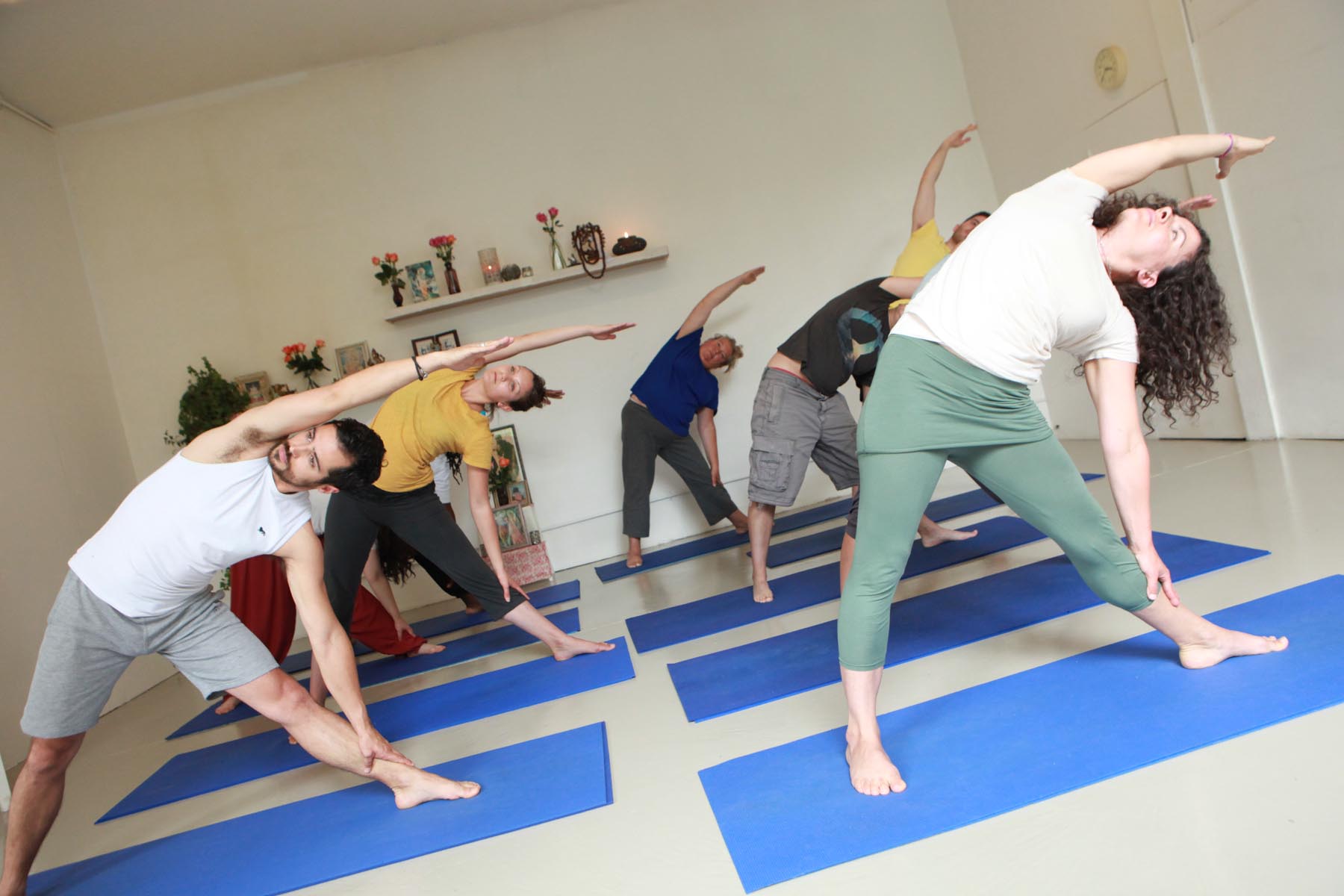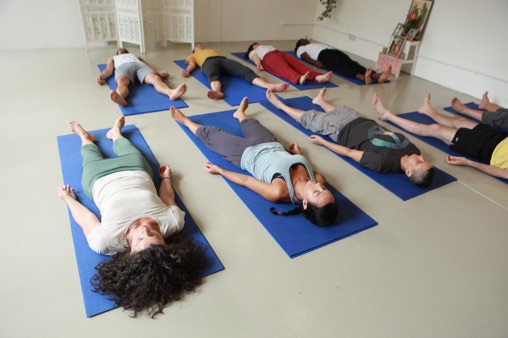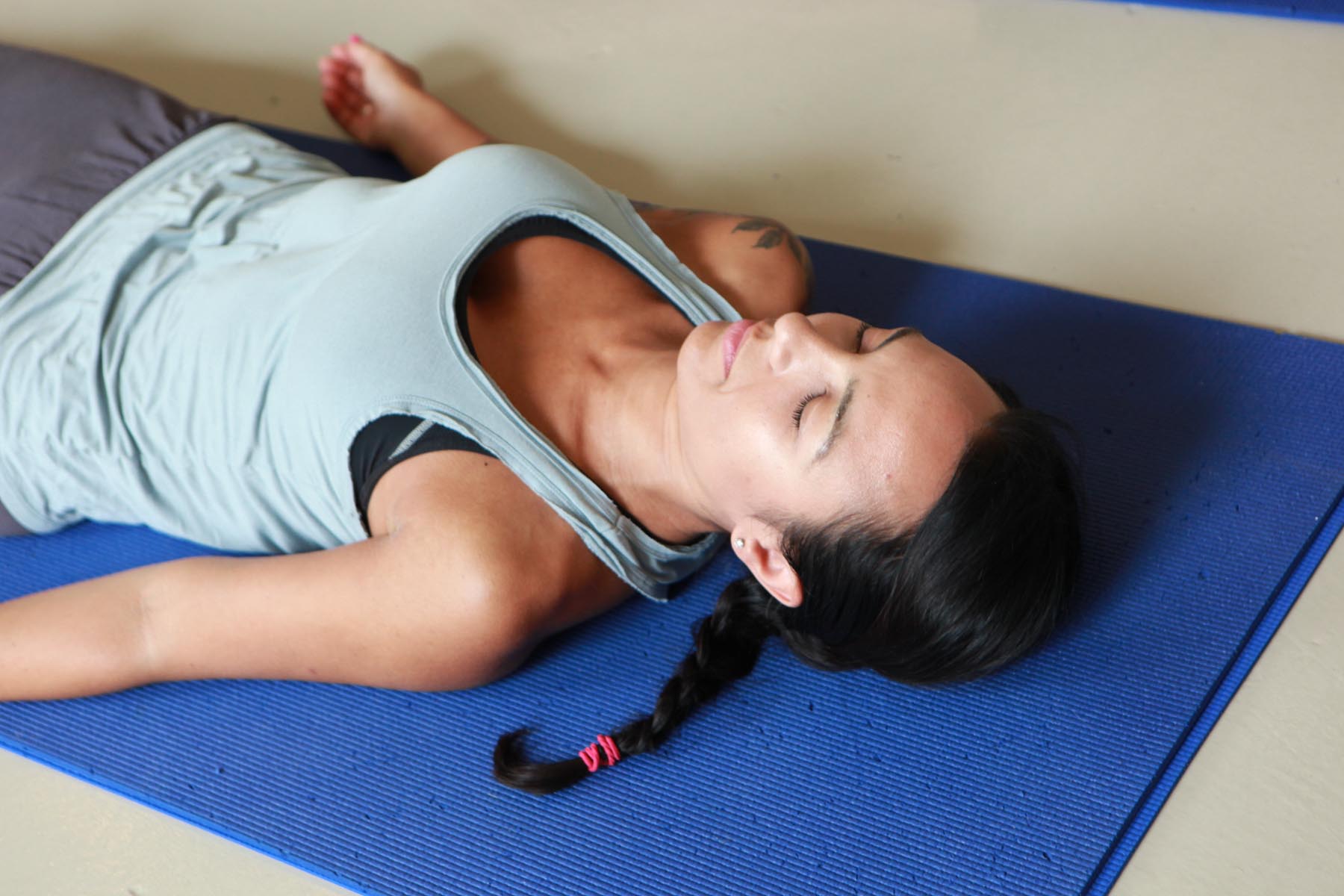Opening chants
Dhyana Slokas
Shanti Mantra
Breathing exercises
Kapalabathi
Anuloma Viloma
Warm up
Sun Salutation
Leg stretches
Double leg lifts
Inverted sequence
1: Headstand
2: Shoulderstand
3: Plough
4: Fish
Forward & backward bends
5: Sitting Forward Bend
6: Cobra
7: Locust
8: Bow
Twists, standing & balancing poses
9: Half Spinal Twist
10: Crow or Peacock
11: Standing Forward Bend
12: Triangle
Relaxation
Final Relaxation
Closing chants
Maha Mrityunjaya Mantras
Peace Mantras
————————-
About the Sivananda Class Sequence
All of our classes at Light Yoga Space are classical hatha yoga, taught in the Sivananda tradition and follow an ancient sequence of yoga postures (asanas), deep relaxation practices, and breathing exercises (pranayama)
Yoga means ‘union’. Yoga practices originate from the spiritual texts of India and evolved as a tool to help the yoga practitioner attain a state of enlightenment or union with supreme consciousness.
The dynamic and disciplined physical poses evolved in order to allow the spiritual seeker to develop enough strength, health and flexibility in their bodies, so that they could then sit for long periods of time in meditation and contemplation on the divine. According to yoga scriptures there are 8,400,000 different yoga postures.
In the Sivananda class we practice a profound 12 posture sequence with variations.
In a typical class we begin with about 15-20 minutes of pranayama or breathing exercises.
To warm up we practice a series of flowing movements called sun salutations (surya namaska). Each movement is coordinated with the breath to bring the mind to focus.
We follow Sun Salutations with leg stretches to further warm up the hamstrings, and double leg lifts to strengthen the abdominal muscles.
Once we’ve warmed up we move in to the main body of the class and practice the 12 Sivananda asanas in sequence. As a class gets more advanced variations of these postures are introduced.
The class closes with a 10-15 minute deep guided relaxation practice. Focused on physical, mental and spiritual relaxation.
The yoga postures look deceptively mellow, a yoga face gives nothing away but actually we are trained to keep our facial muscles relaxed whilst we practice. The poses are challenging and fun to explore, stimulating the cardiovascular system, getting the heart pumping, picking up the breath rate, massaging the digestive organs, stretching and strengthening the muscles, loosening up and supporting the joints and so much more.
We work through a dynamic sequence of poses, giving the body a super workout, however because we relax between every pose, and learn how to calm and control the breath rate, balancing the nervous system and giving the mind a moment to re-centre we never feel stressed in the practice and the experience remains calm, comfortable and gentle despite the effort.
We don't believe at all in 'no pain, no gain' we believe in staying calm, focused, comfortable and relaxed, and the gain is incomparable
The Sequence: Pose by Pose
Opening Chants
Tuning in the mind
We begin and end each yoga class chanting ‘Om’ 3 times. ‘Om’ is said to be the sound at which the universe vibrates.
We then carefully chant Sanskrit mantras from the yogic scriptures Our intention is to invoke the positive energies contained in the sound forms. We recite the mantras to ground both teacher and student in the introspective, meditative and spiritual aspects of the practice, to set the tone for the practice, to raise our energy, to relax, focus and uplift our mind and importantly to give thanks and to surrender to the yoga masters and to the ancient Saraswati yoga lineage.
Study the mantras here
Breathing Exercises - Pranayama
There are many powerful Pranayama techniques. In a Sivananda class, we practice 4 main exercises.
Deep Abdominal Breathing
Deep abdominal breathing brings air to the lowest and largest part of the lungs. Breathing is slow and deep, and proper use is made of the diaphragm.
Full Yogic Breathing
The full yogic breath is a full body breath. Beginning with a deep abdominal breath and continuing with the inhalation through the intercostal and clavicular areas. A great way to slow down the heart rate and so calm the mind when stressed, tense or anxious.
Anuloma Viloma - Alternate Nostril Breathing
In Anuloma Viloma we alternate the breath from right to left nostril and retain the breath in between. We inhale through one nostril to the count of 4, retain for 16 and exhale through the other nostril for 8. This exercise is balancing for the left and right side of the brain and increases energy levels, concentration and mental balance.
Kaphalabhati
Good for cleansing the lungs of stale air and toxins. A stimulating, energising exercise that brings plenty of fresh oxygen to the brain. This is a good exercise to practice first thing in the morning, otherwise known as a yogachino.
Warm Up Sequence
Sun Salutations - Surya Namaska
In the Sivananda Class the Sun Salutations are always practised prior to the Asanas. The sequence consists of 12 positions linked together by movement and coordinated with the flow of the breath.
The purpose of the Sun Salutations is to warm up the whole body through moving stretches and the alteration of forward and backward bends.
Sun Salutations promote the flexibility of the spine and the limbs, and gently increases the blood circulation.
The sequence helps to regulate the breath and increases the respiratory capacity.
After doing the Sun Salutations it becomes easier to practise Asanas, as the dynamic stretches have prepared the body for the static stretches in the steady poses.
If you only have a little time available for you self-practice then at least do a few rounds of the Sun Salutations. It is a great way to prepare the body for the day when practised in the morning.
Single and Double Leg Raises
These exercises helps to improve the flexibility of the hamstrings and the calf muscles. It is an important preparation for the forward-bending Asanas and for coming into the Headstand.
The double leg raises greatly strengthen the abdominal muscles. Some strength in this area is required for coming into Asanas like Headstand , Shoulderstand and Plough. Strengthening the abdomen can also help to relieve some cases of lower back pain.
Inverted Postures
Headstand - Sirshasana
The headstand is practiced by experienced practitioners. Beginners start by learning a strengthening exercise that prepares the upper body for the pose.
By reversing the normal effects of gravity, practice of headstand rests the heart, aids circulation and relieves pressure on the lower back.
Practiced regularly headstand can help prevent back problems and improve memory and concentration.
Inverting the body stimulates deep breathing bringing a fresh supply of oxygen rich blood to the brain. Learning the headstand can be a tremendous energy and confidence boost helping to overcome fear blocks.
Shoulderstand - Sirvangasana
The shoulderstand stimulates the thyroid and parathyroid glands by pressing the chin into the base of the throat.
The posture encourages deep abdominal breathing as it limits the use of the top of the lungs.
Same benefits as the headstand in addition an extra stretch for the neck and upper back.
Plough - Halasana
Practice of Plough encourages flexibility and relieves tension in the spine and neck. Plough pose nourishes the spinal nerves and strengthens the back shoulder and arm muscles. By compressing the abdomen the plough stimulates and massages the internal organs.
Fish - Matsyasana
Compresses the neck and shoulders so counter-stretches the shoulderstand and plough. Releases stiffness in neck and shoulders and corrects the tendency towards rounded shoulders. Expands the rib cage for deep breathing and increases lung capacity. Tones the nerves of the neck.
Forward Bends
Sitting Forward Bend - Peschimotasana
This pose is one of the most powerful Asanas, helping to lengthen the spine and ease spinal compression. Regular practice of Paschimottanasana massages the internal organs, keeps the back supple, the joints mobile, the nervous system invigorated and increases flexibility in the lower back and hamstrings.
Benefits for the mind include deep relaxation and concentration. Paschimottanasana is nicknamed the posture of surrender. To really benefit the most from the posture one needs to completely surrender and relax into it.
Backward Bends
Cobra - Bhujangasana
This pose stretches the chest, lungs, shoulders, and abdomen, it firms the buttocks and stimulates the abdominal organs. With practice this posture opens the chest area stimulating the heart, and expanding the ribcage and lungs.
Locust - Salabhasana
This strong pose strengthens the lower back, buttocks, legs and abdomen. It helps prevent constipation and aids the digestive system. This pose also helps improve posture, and flexibility in the upper back.
Bow - Danurasana
The Bow stretches all parts of the back simultaneously. In this posture, the head, chest, and legs are lifted, while the body rests on the abdomen. The intestines are stimulated and the digestive organs get a nice deep massage.
Twists, Standing & Balancing Poses
Half Spinal Twist - Ardamatsyasana
To gain good flexibility of the spine, lateral rotationmust be practised as well as forward and backward bending.
The Half Spinal Twist also works on the rotation of the hip joint, and the pressure of the thigh against the abdomen stimulates the digestive system, in particular the functioning of the large intestine.
The rotation of the thoracic spine helps to release tensions in the area between the shoulder blades, and tones the spinal nerves.
The Crow - Kakasana or Peacock - Mayurasana
This posture strengthens the arms and shoulders. The flexibility of the wrists is improved through balancing the body weight on the hands.
The Crow demands your full focus and is excellent for developing concentration, which prepares the mind for meditation.
Practising the Peacock gives many of the same benefits as the Crow. It strengthens the arms, shoulders, legs, back and abdomen. The pressure of the elbows and upper arms tones the abdominal organs and the lungs. This posture is a great tonic against constipation.
Standing Forward Bend
Aided by gravity this standing pose helps to develop strength and flexibility in the legs and hips. This Hands-to-Feet Pose stretches the spine and joints, and increases the blood supply to the brain.
The Triangle - Trikonasana
The Triangle gives a lateral stretch to the spine, and both strengthens and stretches the muscles at the side of the body, at the same time. It tones the spinal nerves and stimulates the digestive system. This is the last of the twelve postures of the Sivananda sequence and is followed by the final relaxation. There are many variations of the Triangle Pose.
Final Relaxation
During the guided yogic relaxation at the end of the yoga class no unnecessary energy is spent, so deep relaxation is possible. We experience threelevels of relaxation physical, mental and spiritual
Physical Relaxation
Firstly we rest the body by putting it into a position where it doesn’t need to make any physical effort at all. ‘Shavasana’ (the corpse pose) We lye on our backs with our feet and legs apart.
Through guided relaxation techniques and visualisation we send suggestions to our individual body parts in the first person.
‘I relax my toes and feet, my toes and feet are relaxed’
‘I relax my ankles, my ankles are relaxed’
‘I relax my calves, knees and thighs, my calves, knees and thighs are relaxed’
...and so on.
Mental Relaxation
Once we have worked our way through the physical relaxation we bring our awareness to the mental relaxation. Allowing the mind to let go even temporarily of the thoughts and emotions that stop us from attaining deeper relaxation.
Spiritual Relaxation
The Spiritual relaxation is a knowing that we are neither just our body nor our mind. That by letting go of our ego attachments, sense distractions and earthly concerns, true and sublime relaxation is possible. We use our imaginations to visualise an image of deep stillness and peace to give ourselves a taste of this ultimate bliss.

